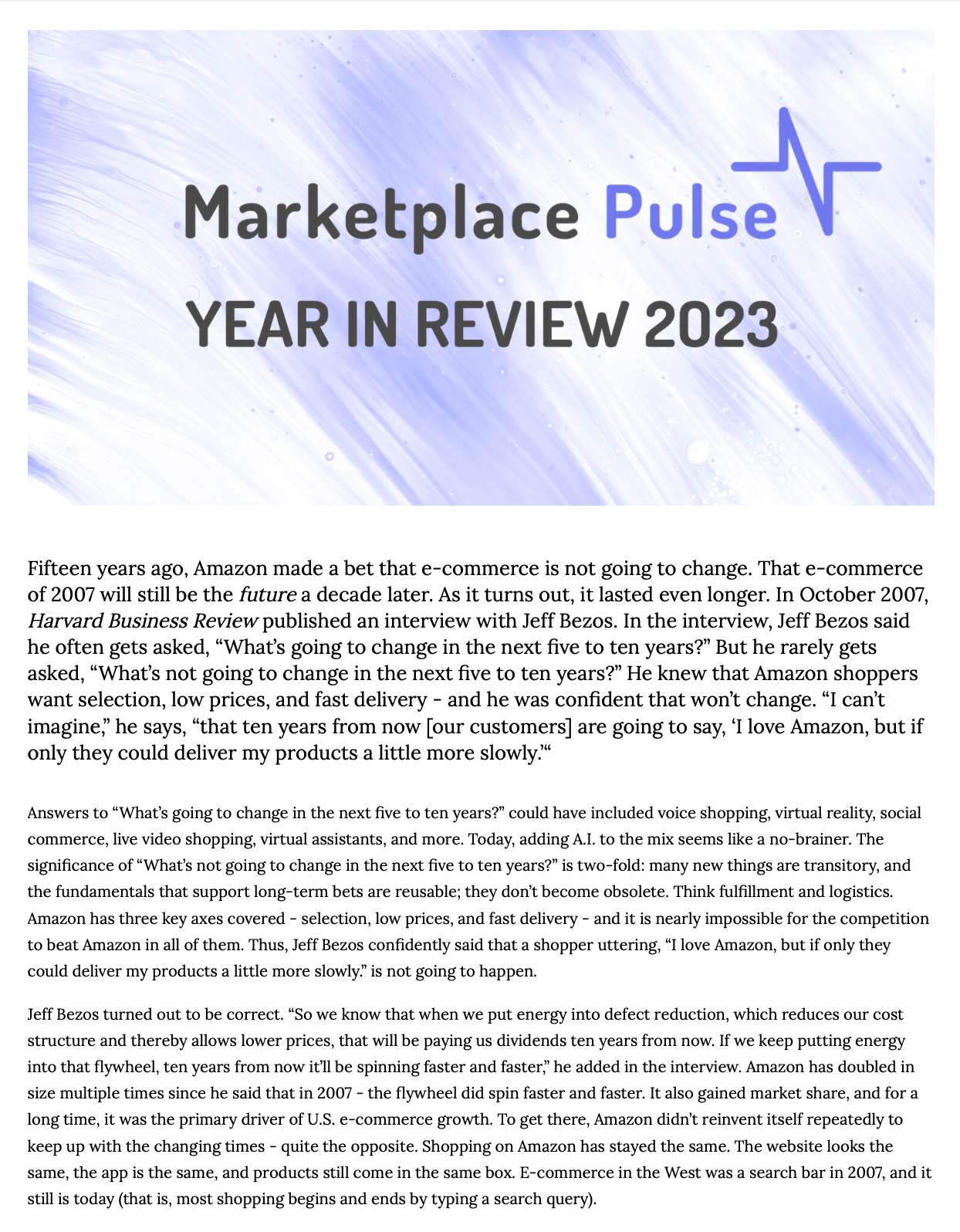Fifteen years ago, Amazon made a bet that e-commerce is not going to change. That e-commerce of 2007 will still be the future a decade later. Jeff Bezos said, “I can’t imagine that ten years from now [our customers] are going to say, ‘I love Amazon, but if only they could deliver my products a little more slowly.’” As it turns out, it lasted even longer. That is the inspiration for the sixth edition of the Year in Review.
The Year in Review looks at the growth of e-commerce and Amazon’s market share and the importance of fulfillment logistics that power its and Walmart’s online retail ambitions. As the hours people spend on their phones continue to increase, social media networks play an increased role. Because of that, they are trying to find their place in commerce. The most noticeable and impactful disruptors are Shein and Temu shopping apps, both from China but only serving shoppers in the West. They are disrupting advertising markets and are too big to ignore, even if their scale is unprofitable and thus could turn out to be fleeting. While they are building marketplaces for Chinese sellers, Amazon is still the most important marketplace. There, sellers continue to gain market share as Amazon’s retail ambitions fade away, yet they are giving up more of their revenue to Amazon in fees. Finally, Amazon shined the light on advertising, and every retailer since followed it to build retail media networks, turning their web real estate into advertising slots.
In 2007, Jeff Bezos asked, “What’s not going to change in the next five to ten years?” For one, Amazon itself didn’t change much. That was Jeff Bezos’ point - Amazon will invest in fulfillment, in Prime, in the marketplace, which will build a flywheel for the future. “So we know that when we put energy into defect reduction, which reduces our cost structure and thereby allows lower prices, that will be paying us dividends ten years from now,” he added in that Harvard Business Review interview.
But advertising and retail media networks changed, as did the use of smartphones, the growth of direct-from-China commerce, and even the size of direct-to-consumer (DTC), as seen in Shopify’s results. While Amazon stayed the same on the surface, many things inside and around Amazon did change. They were not enough to unseat Amazon from the throne - instead, some made it even more entrenched - but they were changes nonetheless.


